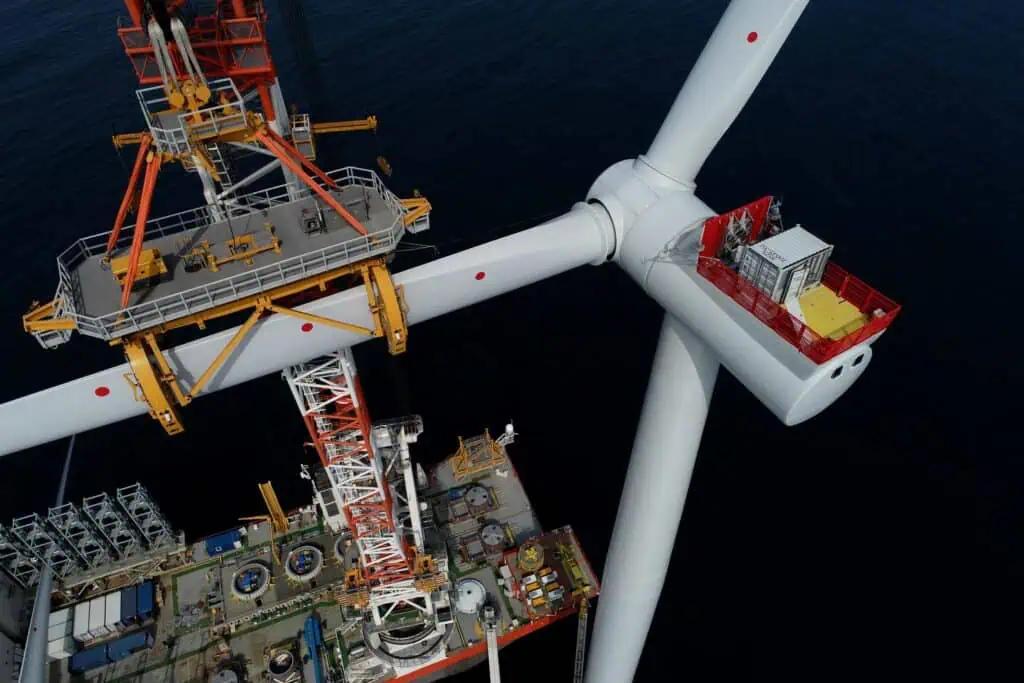Falck Renewables, BlueFloat Energy and Ørsted UK have expressed their support for the bid to give Scottish Green Freeport status to the Cromarty Firth.
The three companies, which have successfully secured seabed leases in the recent ScotWind round, have become members of Opportunity Cromarty Firth (OCF), the partnership of private, public and academic sector bodies committed to ensuring the Highlands is home to one of Scotland’s two future Green Freeports.
OCF believes a Green Freeport in the Cromarty Firth will maximise local and Scotland-wide benefits from a massive pipeline of renewable energy projects and skilled jobs, placing the Highlands at the heart of the drive towards net-zero.
This view is backed by all three global companies, who agree that awarding Green Freeport status to the Cromarty Firth is aligned with their ambitions of investing billions of pounds in developing floating offshore wind projects off the Scottish coast and boosting investment in the Scottish supply chain.
Falck Renewables, BlueFloat Energy and Ørsted UK believe Scotland can successfully transition its oil and gas expertise into the floating offshore wind sector. That expertise already exists in the north of Scotland in fabrication and manufacturing facilities as well as its technological capabilities, maximising the opportunity to create a pipeline of quality jobs.
A spokesperson for the consortium said: “When we applied for the right to develop floating offshore wind projects in Scotland we identified opportunities for manufacturing, fabrication and other supply chain companies in Scotland.
“The way to achieve this wasn’t hard to work out. Many independent and industry reports into creating a successful offshore wind industry in Scotland point to the Cromarty Firth as providing the unique blend of attributes required.
“That is why we are calling on the UK and Scottish Governments to choose the Cromarty Firth as one of the locations for Green Freeport status.
“The Cromarty Firth region has always been and continues to be a thriving manufacturing hub. Now with floating offshore wind, and in particular the concentration of projects off the northeast coast, Cromarty Firth offers the space to store and assemble components necessary to deploy these projects at scale. This unique set of attributes is attractive for the supply chain companies who need the confidence to invest to support the industry.
“Both the Scottish and the UK Governments have committed to ensuring that Scottish and UK companies and workers benefit from the huge boom in offshore wind in the coming years. Green Freeport status is designed to ensure that manufacturing companies are supported to set up in the region to provide jobs that would otherwise go elsewhere, probably outside of the UK.
“We are convinced that the Cromarty Firth and the Highlands can make this vision a reality and build a pipeline of jobs for the benefit of Scotland and the UK.”
Bob Buskie, Chief Executive of the Port of Cromarty Firth – speaking on behalf of OCF – said: “OCF is delighted to welcome Falck Renewables, BlueFloat Energy and Ørsted UK as members. We completely agree that Cromarty Firth is the best location in Scotland for a Green Freeport.
“Through a Highlands Green Freeport, we have the opportunity and the expertise to lead the world on renewables. The clean energy sector’s importance to the Cromarty Firth, the Highlands, Scotland and beyond cannot be underestimated. These developments would help fulfil Scotland’s net zero carbon ambitions and bring skilled jobs and high-wage opportunities to the Highlands on a level not seen since the oil boom of the 1970s.
“Many of OCF’s members, including the Port of Cromarty Firth and Global Energy, already have a substantial track record in renewables and supported more offshore wind projects than any other Scottish location. But such is the size and scope of this operation that we cannot act alone.
“To fully capitalise on this breadth of ambition, we need to collaborate, pool our resources, and ensure through Green Freeport status that the infrastructure and technologies are created in Scotland to meet this overwhelming demand to decarbonise.”














